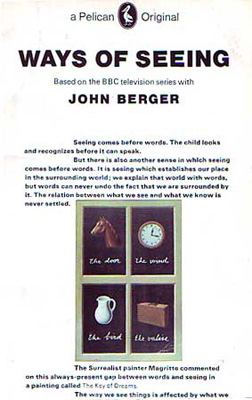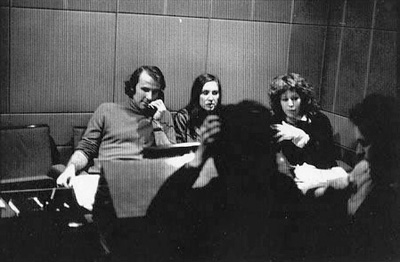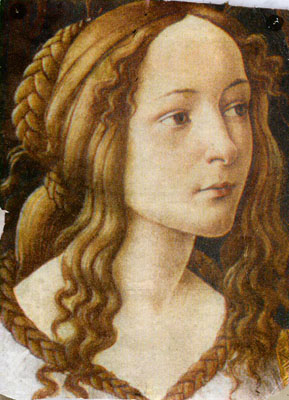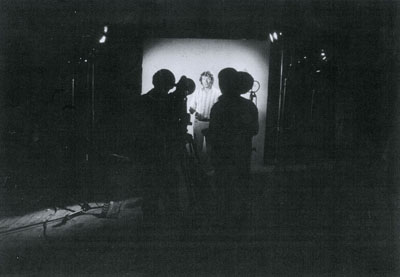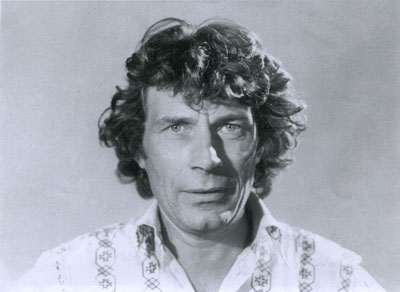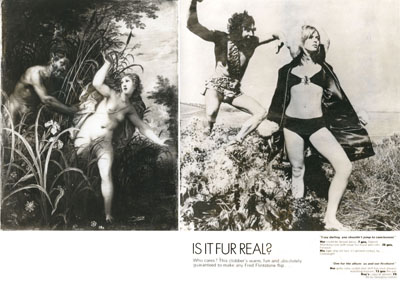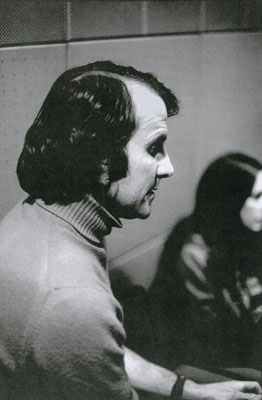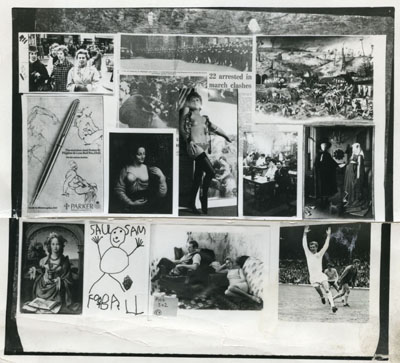Ways of Seeing
1972 4 x 30’
Ways of Seeing was the hugely provocative and influential BAFTA award-winning (1972, Best Specialised Series) four part TV series with John Berger that was subsequently turned into the best-selling book that’s still in print. The films, many foreign editions of the book and related memorabilia were featured in Tate Britain’s exhibition “Ways of Seeing- revisited” (March-July 2005).
Part One:
This first film (and indeed its form) was inspired by Walter Benjamin’s seminal essay “The Work of Art in the Age of Mechanical Reproduction” that had recently appeared in an English translation in 1968. The formal challenge was to turn Benjamin’s very dense essay into a playful and accessible filmic exploration of the many ways in which the reproduction of paintings and art objects from the past had released them from their original fixed bearings into a fluid world of potential new contexts in which their meanings could be subtly or powerfully changed, according to where and how they could be seen, on postcards or in domestic settings, by what could be written and said about them in countless books and catalogues, by their relationship to other images with which they could be juxtaposed, and by the music that could be played over them in numerous documentaries, including this one!
Part Two:
This second film set out to question the way women had been seen and represented in European paintings, with particular regard to the ways they’d been depicted within the tradition of “The Nude”. The programme consisted of two parts. In the first we constructed a short 15’ film around a new text by John, mainly drawn from various previous things he’d written, including his soon to be published Booker prize-winning novel “G”. This was then shown to five feminist writers and friends (identified at the end of the film and including John’s then wife Anya) whose spontaneous and articulate first responses were immediately recorded in a lively filmed conversation, which originally lasted around 50 minutes (and was best at this length), but which we had to edit down to 15 minutes to keep within the designated 30 minute length of the programme.
Part Three:
This was the only film in the series to be directly developed from a pre-existing Berger essay, in this case his provocative introduction to Howard Daniel’s “Encyclopaedia of Themes and Subjects in Painting”, in which John looked critically at the tradition and function of European easel painting from roughly the 15th to the 19th century. The film considerably developed and refined this essay’s analysis of class and power and the role of the spectator/owner, in particular demonstrating how the special qualities of oil paint had made it possible to render people and their clothes, houses, possessions and landscapes luminously and almost tangibly ‘real’, to the point where this metaphorical appropriation of the material world, ie the framed oil painting itself, would ultimately (and ironically) become the most valuable object of all
Part Four:
The subject matter of this last film was in fact not decided upon until the series was already on its way. Our first notion had been to deconstruct the concept of ‘National Heritage’, but truthfully I was somewhat concerned that we hadn’t yet found a satisfactory filmic form for this idea…when suddenly a light bulb moment happened. Indeed it happened by chance when John, after travelling on the train to have dinner one evening in Richmond with his old ‘Monitor’ benefactor Huw Wheldon, rang me to say he’d observed how many of the seductive tropes and traditions of European painting seemed to have ended up in some of the images of advertising he’d been looking at along the way. Did I think that would make a better subject for the last film? Of course it took me no time at all to say yes, and with some relief we immediately got to work on this much more fruitful idea. Of course many hours of looking through books of paintings, travelling the tube, noting down billboards and shop window displays and browsing through endless magazines still needed to be done to validate the thesis…but so was born possibly the most original film in the series. In particular we realised how colour photography now played exactly the same role as oil paint once had, with it’s ability to render the world and everything in it visually alluring and desirable…and thus the perfect medium for advertisers who wanted to make purchase of the desirable always seem possible.
If you are in the least interested in art, have your set tuned and be ready to have your eyes opened by John Berger in the first of a stunning new series “Ways of Seeing” - an eyeopener in more senses than one.
Sunday Times
A timely view of the camera and in particular of television as an agent of distortion… a programme dedicated , as is so much of John Berger’s writing, to stripping away the aesthetic mysteries which surround art criticism.
Observer
Marvellous series.
Daily Mail
Ways of Seeing opened our eyes to visual culture: A 1972 TV series was a British arts broadcasting landmark, but in recent celebrations the role of the director has been forgotten
The Guardian, 7 September 2012
RE-SEEING WAYS OF SEEING (This appeared in the collection of essays, published by Bloomsbury, ’John Berger-a season in London 2005’) By Mike Dibb
I still have all the versions of the four scripts that made up the series we called Ways of Seeing. Reading them now, after 30 years, I’m struck by how much John wrote and re-wrote (mostly in a back room of his parents’ flat in Hallam St, just behind Broadcasting House) and how much we changed right up to the moment of filming; and then modified during the editing, with David Gladwell, after John returned to his home in Geneva. For instance, the first film originally began with John telling a short fable. But it felt flat, as did a potentially striking sequence which happened a little later, in which John with a sharp knife cut out a head from Botticelli’s Venus and Mars. I thought it would be interesting to try losing the story and bring the Botticelli sequence to the head of the film, juxtaposing it with a commentary for which it hadn’t been intended. Immediately that ‘act of vandalism’ gave the series the dramatic send-off we needed.
Because we were able to edit the films across a period of months, we could film additional material when first ideas didn’t work or better ones occurred. (Which is, of course, why John’s hair suddenly changed halfway through Programme One!). And sometimes we were lucky. We spent one day filming at a primary school in South London. Having played a number of games with pictures and words, none of which really worked, we showed the children a reproduction of Caravaggio’s Supper at Emmaus. Miraculously something began to happen and their spontaneous and perceptive comments created one of the first film’s most memorable sequences.
What I’m trying to say is that Ways of Seeing wasn’t conceived to illustrate a thesis. It was always a journey of discovery. It began (as yet untitled) when Stephen Hearst, the BBC’s Head of Music and Arts, asked John whether he would like to develop a short series about painting on themes of his choice. I was always going to be a part of it – I’d already met John in 1969 and, as a teenager, been greatly influenced by his writing since reading his art column in the New Statesman back in the 1950’s – but, as a lowly assistant arts producer, I didn’t think I’d be allowed to direct more than an episode or two. However, as John and I started to research the ideas, it became clear to everyone that the collaboration was working and I was given the responsibility of producing and directing the whole thing. John’s first crucial decision, from which everything else in the series flowed, was to use as our point of departure some of the ideas in Walter Benjamin’s essay The Work of Art in the Age of Mechanical Reproduction, which had recently appeared in English. How could we translate Benjamin’s brilliant but very dense text into an accessible television film, which would be both provocative and playful?
Although Ways of Seeing may appear to be a succession of statements, these statements are really questions. When John speaks in conversation his sentences often end with an interrogative. No? he says , inviting a response, not automatic assent. This is also true of his letters: “Dear Mike, Here’s script no.2. Please remember all I said about it on the phone. Criticise, improvise, change, improve, cancel out, as much as you want or see how to. Or even we can begin again. All I would stand by is the essential idea…” This exemplary approach to collaboration characterised how we worked on Ways of Seeing, and on subsequent films together. Which does not mean that the process was always easy and free of tension (with John it’s never like that), but the arguments, when they arose, were always open and ultimately resolved, not through theory, but by trying out an idea in practise to see if it worked. And I often remember us laughing.
We were granted remarkable freedom (almost unthinkable in today’s over-controlled TV climate) – by the executive producer John Drummond (now Sir John) – to discover, during the process of making the series, in what direction the films should evolve. This freedom also derived from the trust that was then conventionally given by Channel Controllers to individual programme departments and from the departments, in turn, to the producers who worked in them. I’m sure it also helped that the budget was small and so there was nothing much financially at stake.
Even after we began filming, we had no idea what the fourth film should be. For a while its proposed subject was the ‘market’. We also played with ideas for deconstructing the meaning of ‘national heritage’. Then one Sunday evening John phoned me from Richmond. He’d been to have lunch with Huw Wheldon (mastermind of the BBC’s first arts magazine Monitor, for which John had earlier made several films). On the way there John had looked at the ads on the escalators and walls of the underground. He’d noticed, not only how advertisers occasionally used the images and status of European art to sell their products, but also to what extent the iconography of these painted images was being co-opted and re-deployed by advertising, with colour photography assuming the function that oil paint once had. From that phone call the last and possibly most original film in the series was born.
There are two questions I’m often asked. Why the blue screen and why that shirt? The answers are connected. It was in the early days of CSO (colour separation overlay). Our original idea was that, because John would travel nowhere (in deliberate contrast to Kenneth Clarke) the paintings would have to ‘travel’ to him, so he should be filmed in a TV studio in front of a blue screen, with images electronically layered in behind. I soon realised it would be impossible to make the programmes this way, because video tape editing was then too cumbersome and crude, and I needed the flexibility of film. But the idea of the blue screen stayed. I considered filming on one of the Ealing film stages, but it was too expensive. So we hired very cheaply a nearby electrical goods warehouse and brought our mobile blue screen there. This meant that John, unable to wear his normal blue shirt, had to go off and buy something without any blue in it. He arrived back with what has provoked so much comment over the years, a pair of identical cream and red ‘chain-mail’ shirts, circa 1971. We didn’t give them a second thought then, and now they’re iconic!
Another thing that has always amused me is that out there in the darkness, on either side of John in his shirt delivering words of wisdom in front of a celestial screen, was Ways of Seeing’s first silent audience, a packed house of fridges, TV sets and cookers! Little did we imagine what influence this modest little series would have and how many arguments it would engender. In the subsequent book, on which five of us worked, we tried to carry on in the same spirit, reversing the conventions of books about art. Among other things we used a heavy black type-face, small black and white reproductions embedded within the text rather than separated out into full-page plates, and tried to make it the cheapest art book then available, just 60p for the first edition.
Consider what I say, but be sceptical, said John at the end of the first film. To be continued… we wrote at the end of the book. Maybe that’s why both the films and the book are still alive.
MIKE DIBB, January 2005
Ways of Seeing opened our eyes to visual culture - Guardian 7/09/2012
How we made: John Berger and Michael Dibb on Ways of Seeing - Guardian 2/04/2012

